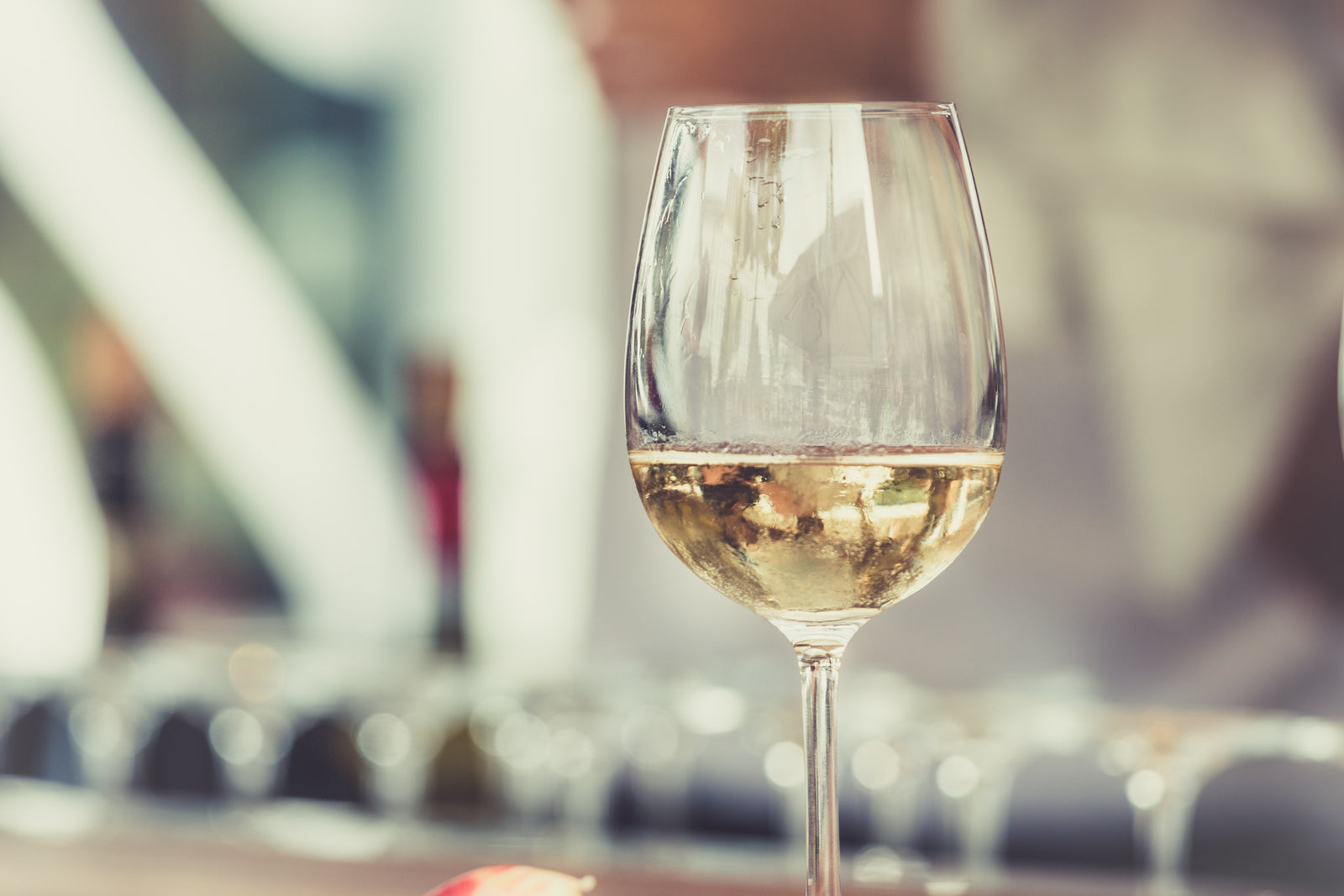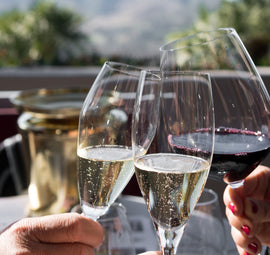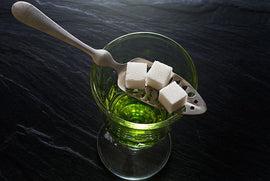There is a unique experience that happens when trying an unfamiliar wine for the first time. Cognitively, I search for clues to figure out what it is I am about to put in my mouth. I delve right in by admiring color, clarity, viscosity, aroma, and finally taste. Could it be a Chenin Blanc? Maybe an earthy Sangiovese? Similar to tasting wine blind, I have only my organoleptic sensors to rely on — no scores, no write-ups. And amazingly, wine has a way of drawing you in. Some spend minutes, or what seems like hours, admiring a glass of wine before the liquid ever touches their lips. (Yes, I am guilty of such behavior, but swear I don’t do it with milk or other beverages.) But, the thrill occurs when the wine is finally tasted. (It might not always be what you expect, but that’s the thrilling part.) Our selections this month may be new to some. There are only a few producers in Burgundy still producing Aligoté, and maybe the most difficult thing about Vacqueyras is pronouncing it correctly. One thing is for certain, whether or not you are familiar with the wines, and regardless of your expectations, they are guaranteed to make an impression.
2015 Alex Gambal
Bourgogne Aligoté AC
Beaune, France
2013 Domaine de l’Espigouette
Vacqueyras AC
Violés, France
With the sole exception of Chablis, but including Beaujolais, all of Burgundy lies along a rather narrow north-south strip that extends no more than 100 miles along the west bank of the Saône River. Here, the mineral-rich soils and sunny exposures create an excellent terroir, considered by many to be the best in the world for high-quality wines. The most favored vineyards are on east-facing limestone hillsides, particularly the 30-mile stretch near Beaune called the Côte d'Or, which rests on a single long escarpment that produces some of the world's most sought-after Pinot Noir and Chardonnay grapes. Aligoté is a grape that was first recorded in Burgundy in the 18th century, and is still planted almost exclusively there, though there are limited plantings in Bulgaria, Moldavia, and even California. DNA testing has shown Aligoté to be a member of the Pinot family, but is much more hardy and adaptable than other members of the family. When the appellation system in Burgundy was set up in 1936, Aligoté was considered unable to express the characteristics of a particular place. As a result, wines made of Aligoté are generically labeled Bourgogne Aligoté. Recently, Aligoté has been confined to lesser terroirs, with the best land going to more lucrative Chardonnay or Pinot noir. However, when the grapes are farmed conscientiously and the wines are made with precision, they can be delicious and distinctive, full of the energy and minerality that are the hallmarks of Aligoté and of white Burgundy. In a region rooted in historical tradition as Burgundy, Alex Gambal is something of an abomination — an outsider who instead of inheriting his business and vineyards from older generations, started from scratch. Alex, an American, moved to Beaune in 1993, driven by his passion for Burgundy. He’d met another American, now Burgundy-resident, the influential wine broker Becky Wasserman, and she encouraged him and his young family to spend a year working in the region. But the Gambals stayed on. After attending viticultural school in Beaune, he established a négociant business, Maison Alex Gambal, in 1997, with the goal of creating hand-crafted wines in the old-world fashion, each expressing character, terroir, and purity. A négociant is a wine merchant who sources grapes and unfinished wines from small vineyards, and through winemaking, blending, and aging, creates wines under his own label. As Alex is fond of saying: “There are no great wines without great grapes.” In 2011, he acquired vines in the Grand Cru Vineyard Bâtard-Montrachet, becoming the first non-Frenchman in history to purchase vines in this storied area. Now with close to 30 acres throughout Burgundy's prestigious Cote d'Or, this former rising star is finally a master in his own right. The winemaking is practical and grounded on centuries-old Burgundian traditions. The grapes are all hand-harvested and fermented by naturally-occurring yeasts. Whites are barrel-fermented, aged on their lees for 10-16 months and only racked once before bottling, lightly fined and unfiltered. Cellar processes are performed according to biodynamic phases of the moon and planets. Alex Gambal’s 2015 Aligoté has floral aromas backed up with spicy notes of white pepper. In the mouth, there is a delicious combination of golden apples, white pears, citrus, and wet concrete. I love the racy freshness of this wine. The acidity is zippy and fresh, but not aggressive or jarring. The wine can be paired with poultry, mild cheeses, and fish dishes with cream sauces. It works very nicely with spicy dishes such as, mussels in Thai green curry or clams in chorizo and tomato based broth. Aligoté is famous for being the foundation for the aperitif/cocktail the French Kir. Pour 2 TBSP of crème de cassis in a wine glass and top with Aligoté.
The 2015 Alex Gambal Aligoté is $22.99/bottle, $248.30/case.
Winemaking along the Rhône River has a long history, dating to the era of the Roman Empire. Pliny the Elder’s description of the resin-flavored vinum picatum produced in the hillsides near Vienne is preserved in the writer’s Natural History. Over a thousand years later, the “Castle of the Popes” and a small pilgrim’s chapel today stand as respective and enduring symbols for two of the Rhône Valley’s greatest wines, Châteauneuf-du-Pape and Hermitage. As the Rhône River flows southward, the walls of its valley, so tight and steep around Ampuis and Tain l’Hermitage, soften and widen, revealing broad expanses of vineyards, at times extending as far as the eye can see. These are the Côtes du Rhône, Côtes du Rhône Villages and the crus of the Southern Rhône. Beneath the steep slopes of the jagged Dentelles de Montmirail, in the Southern Rhône, lies a band of some of the most beautiful wine villages in France: Vacqueyras (pronounced va-as in va-cuum, cquey-as in ke-boom, ras-as in Ras-tafarian), Sablet, Cairanne, Séguret, Rasteau, Gigondas, and Beaumes-de-Venise. Set off by a backdrop of garrigue (windswept hilltops/slopes inhabited by scrub-brush and Provençal herb outcroppings), and soft, tree-clad hillsides, their vineyards cover the plains and intermediate slopes and spread high into the hills. The Southern Rhône Valley was not always the popular region it is today. For most of its life, with a few exceptions in Châteauneuf du Pape, until the late 1980’s and 1990’s, there was a general lack of interest in their wines outside of Southwest France. Until relatively recently, very few wineries had the funds, marketing clout, or ability to produce, bottle, and sell their own wine. Most growers sold their harvest to négociants and local co-operatives. The region has exploded in popularity, quality, and price since the late 1990’s. Located in between Gigondas and Châteauneuf du Pape, Vacqueyras was the second Côtes du Rhônes Villages to be upgraded to AOC status in 1990. Until 1937, its vineyards had no official recognition from the French government, and up until 1971, they were only classified as vins-du-table. Vacqueyras is slightly larger than Gigondas, with about 3,200 acres of vineyards located in the communes of either Sarrians or Vacqueyras, which places the appellation slightly east of Châteauneuf du Pape. The vast majority of wine produced in Vacqueyras is red wine. In fact, close to 95% of the region is devoted to red wine, 4% to rosé, and due to the warm climate, only 1% is white wine. The best terroirs are rock, sand and clay soils. Grenache is the dominant grape, followed by Mourvedre, Syrah, and Cinsault. With a warmer micro-climate and the presence of the galets (large, flat polished stones) in many of its vineyards to radiate the sun’s heat back into the vineyard at night, Vacqueyras is more consistently full and rich in comparison to its neighbors, even in so-called off vintages. With nearly 160 growers, Vacqueyras should be better known, but continues to be one of the best-kept secrets in Provence. Located northeast of Avignon and Orange, near Violés, in the heart of the Southern Rhône, the Espigouette estate has been family owned for 4 generations. Bernard Latour started working with his father Edmond in the 1980’s, and today runs the estate with his wife, and two sons, Julian and Emilien. Yields are kept low (as low as in Châteauneuf du Pape,) and they have approximately 32 hectares of vineyards located in the villages of Gigondas, Vacqueyras, Rasteau, and in the general Côtes du Rhône area. The average age of their vines is not less than 40 years-old. All vineyards are farmed organically, but little has changed as previous generations were always farming naturally and organic. A big new temperature-controlled chai was finished just in time for the 2012 vintage. This enables them to have a single bottling for each wine and then perfect storage conditions. Vinification is traditional, in a mix of a little stainless steel and cement vats. Aging is then in foudres (large oaks casks). The 2013 Domaine de l'Espigouette Vacqueyras is made from 80% Grenache, 15% Syrah and 5% Mourvedre, that saw a traditional vinification and 12 months aging, all in old foudres. The 2013 Vacqueyras has classic aromas of red plums, black raspberries, spice-box, and dried pepper. It hits the palate with medium to full-bodied richness and depth, bright acidity, and stunning purity of fruit. The wine is nicely concentrated and with ripe tannin, and is a beautiful Vacqueyras that drinks nicely now and will evolve gracefully. It is an excellent match for grilled ribs, sausages, and steaks, as well as roasts and stews of lamb, beef and game. For vegetarian fare, try it with a tomato and oregano tarte tatin, risotto with porcini mushrooms and Delicata squash, or tagliatelle with oyster mushrooms and pesto.
The 2013 Domaine de l'Espigouette Vacqueyras is $22.99/bottle, $248.30/case.





